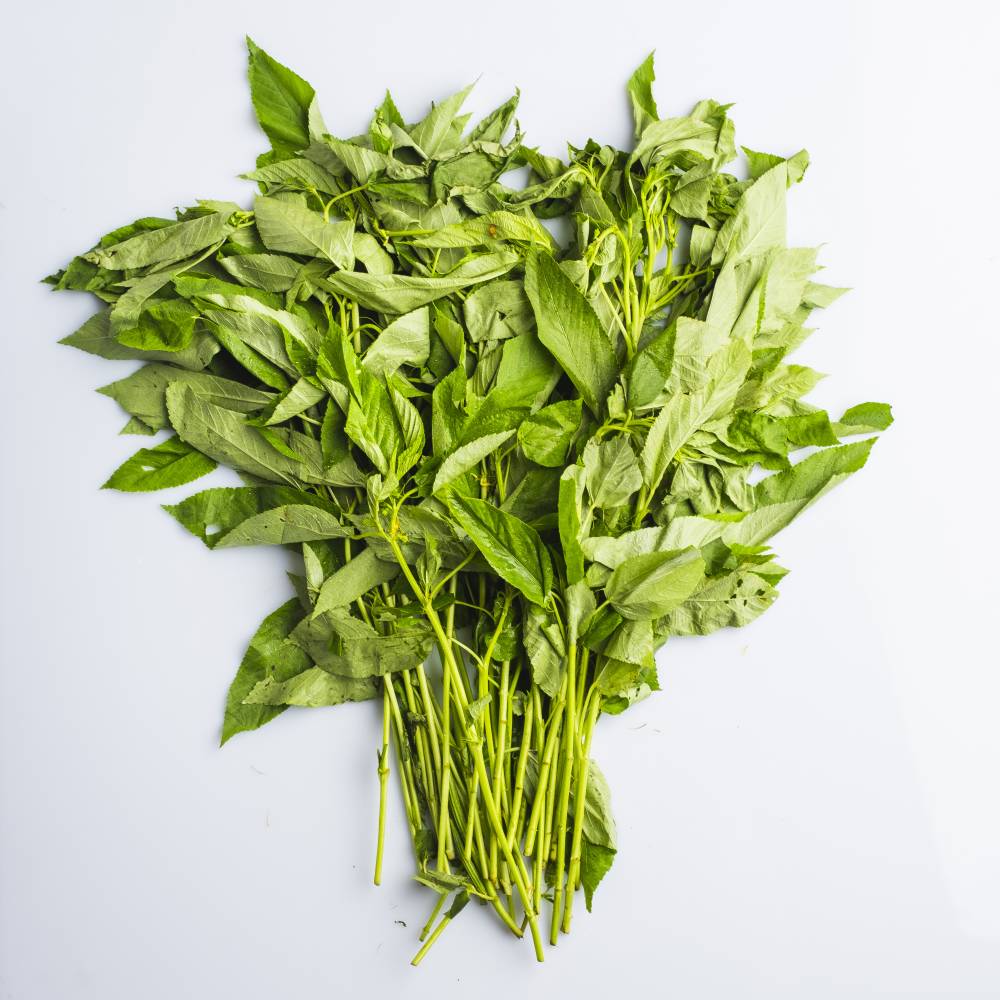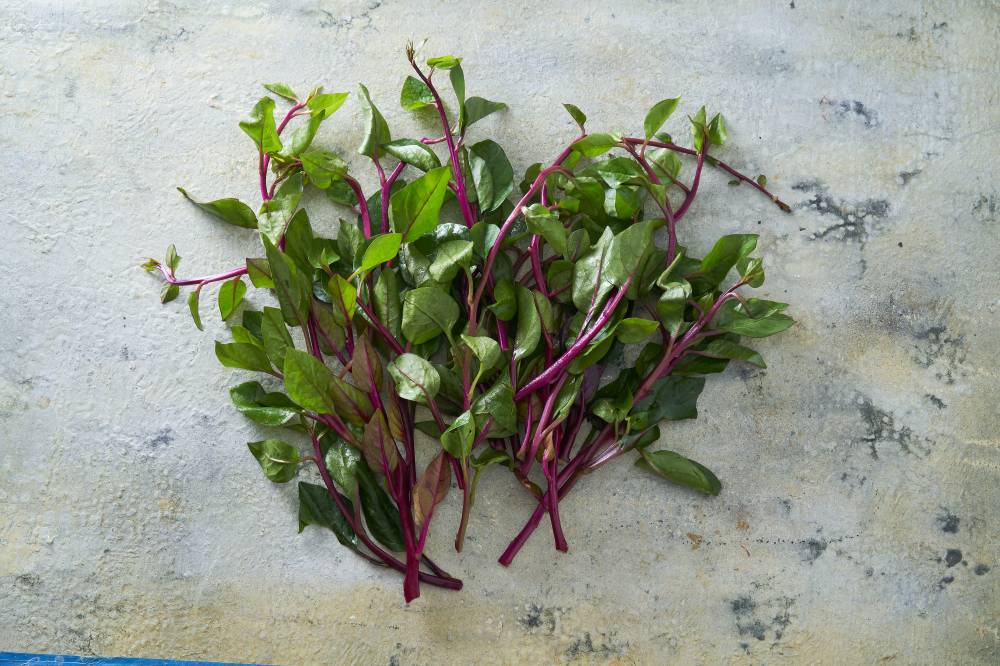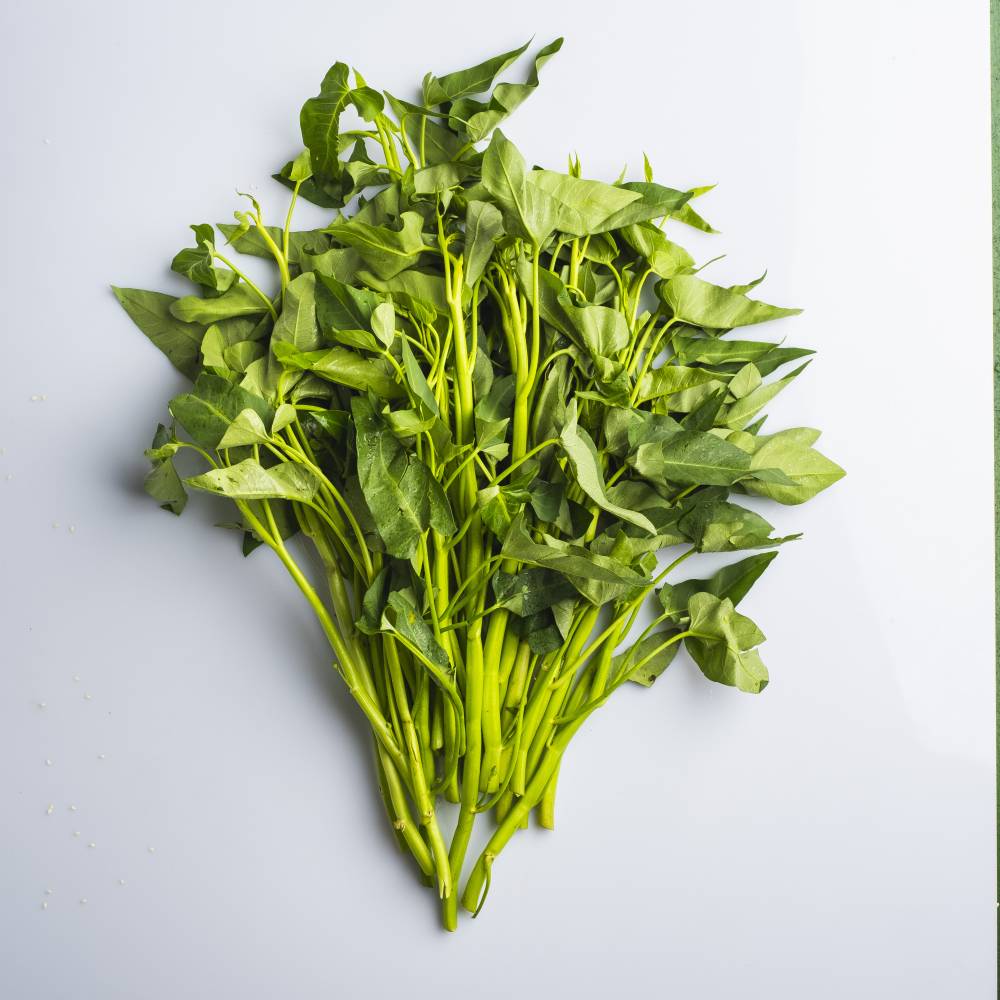3 local leafies you need to know about

Filipinos have been recorded to eat a diet rich in vegetables since the Spanish chroniclers documented our food in the 1700s. Food historian Felice Sta Maria notes that cangcung (kangkong), libato (alugbati) mostaca (mustasa) were among the leafy greens available and eaten by Filipinos, along with different kinds of ferns (pako) and seaweed (lato) from the streams, lakes, and rivers that were foraged. These vegetables, along with fish and other kinds of shellfish, and the occasional consumption of pork (reserved only for special occasions) were what made up the diet of most Filipinos.
Fast forward to today, where pork is the most consumed animal meat, and is found in every vegetable dish. These greens are relatively fast growing and are resilient in our climate and are able to withstand weather shocks, keeping their price relatively low and available all year round.

Saluyot (jute leaves, Jews mallow): the fiber-rich healer
Saluyot is a mucilaginous (slippery-textured) leafy green—traditionally used in Ilocano and other regional Filipino dishes. Many avoid it because of the slimy texture, but that is precisely where the healing properties are stored.
Among saluyot’s properties are:
• High fiber content: promotes digestive health and helps regulate blood sugar.
• Rich in antioxidants: particularly polyphenols and vitamins A and E, which support skin, eye, and immune health.
• Anti-inflammatory and wound-healing properties: often used in traditional remedies to support tissue repair.
• Good source of calcium and iron: supports bone strength and helps prevent anemia, especially important in plant-based diets.

Alugbati (malabar spinach): the iron-boosting climber
Alugbati is a leafy vine with thick, fleshy leaves and stems—often grown in backyard gardens. Alugbati comes in all green, or the more popular purple stem-green leaf combination. It offers a unique nutritional profile, which includes:
• High in iron and folate: essential for red blood cell production and helpful for pregnant women.
• Vitamin C-rich: enhances iron absorption and boosts immunity.
• Mucilage (natural gel): supports gut health and soothes the digestive tract, and is known to treat headaches.
• Contains beta-carotene: a precursor to vitamin A that supports eye health and immunity.
• Beta-sitosterol: limits the amount of cholesterol that enters the body, ideal when one is dealing with cardiovascular issues.

Kangkong (water spinach): the versatile hydrator
Kangkong is a fast-growing aquatic vegetable with hollow stems and tender leaves. The entire plant (except the roots) are edible, with the young leaves as the softest parts. It’s a staple in dishes like adobong kangkong or sinigang, and despite popular belief that it does not hold any nutritional value, kangkong has been used as a medicinal herb to cure high blood pressure since 300 A.D.
Benefits include:
• Potassium and magnesium: promotes heart health and helps regulate blood pressure.
• High water content: aids hydration and supports detoxification.
• Vitamin A and lutein: supports eye and skin health.
• Contains chlorophyll and polyphenols: known for their antioxidant and anti-inflammatory properties.
Cooking tips to maximize the benefits of these local leafies
To retain the nutrients of these vegetables:
• Lightly sauté or steam instead of overboiling.
• Pair with healthy fats (like coconut oil or fish) to enhance absorption of fat-soluble vitamins.
• Combine with citrus (like calamansi or lemon) to help increase iron absorption.
• Store in cotton pouches before washing, and keep refrigerated to prolong their shelf life.
Saluyot, alugbati, and kangkong are more than humble greens—they’re our local functional foods that support Filipino health traditions and modern nutritional science alike. Making them regular staples in your meals is a simple, delicious way to nourish your body and honor local food heritage, while maintaining a sustainably sourced diet.

















